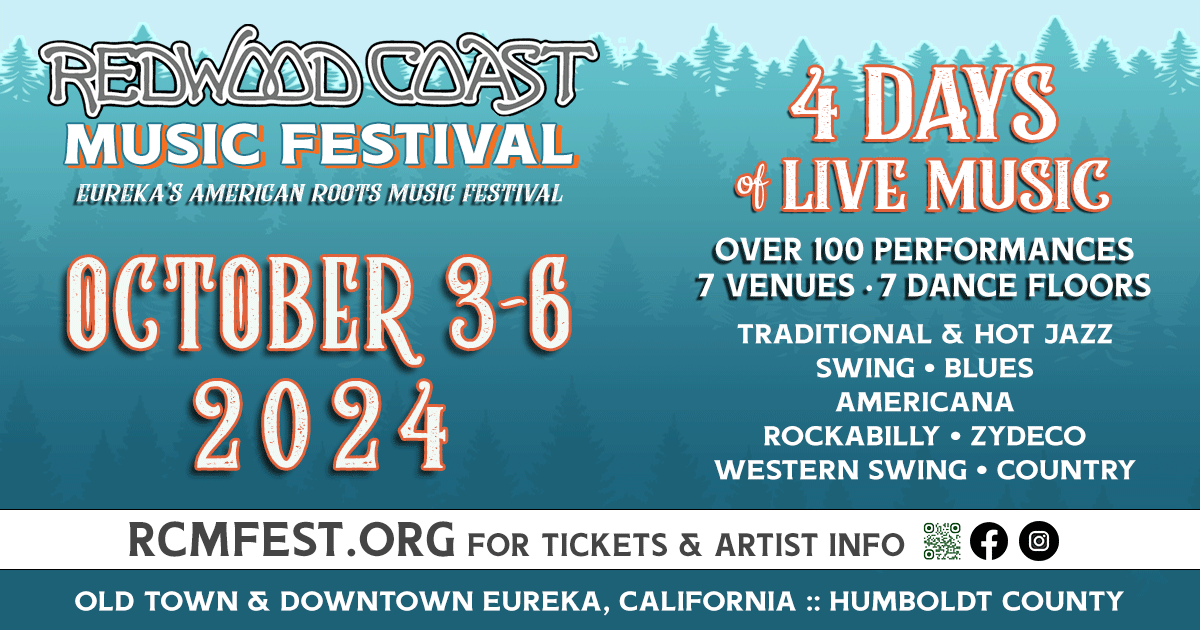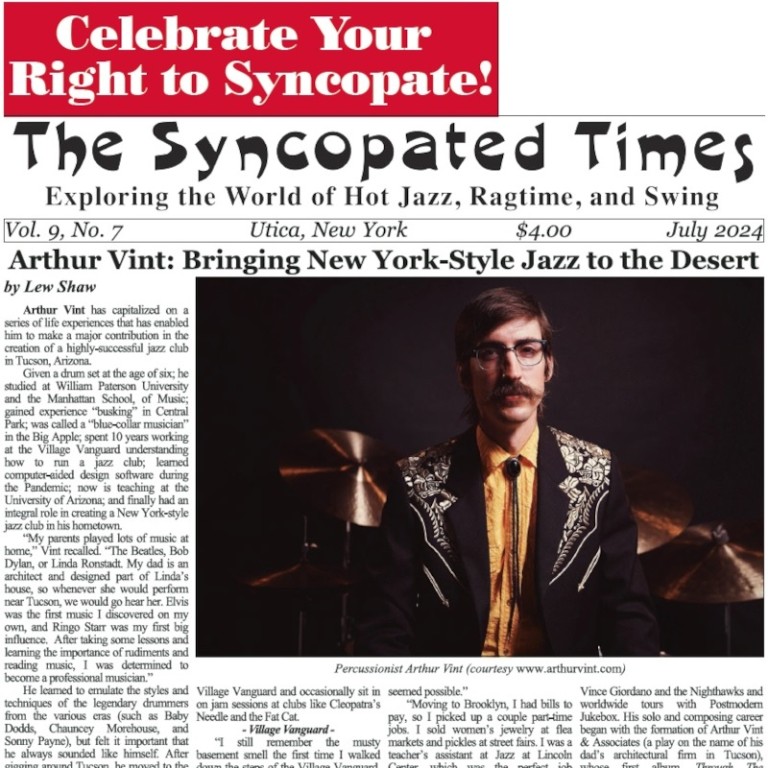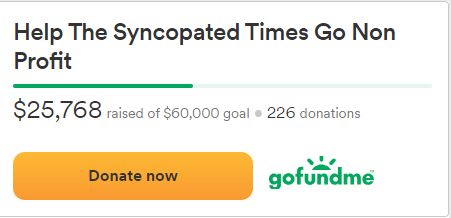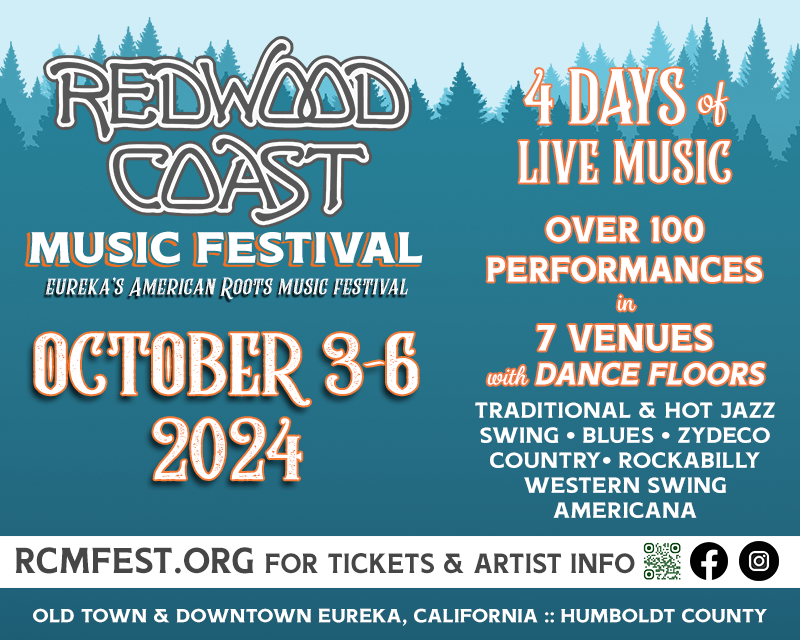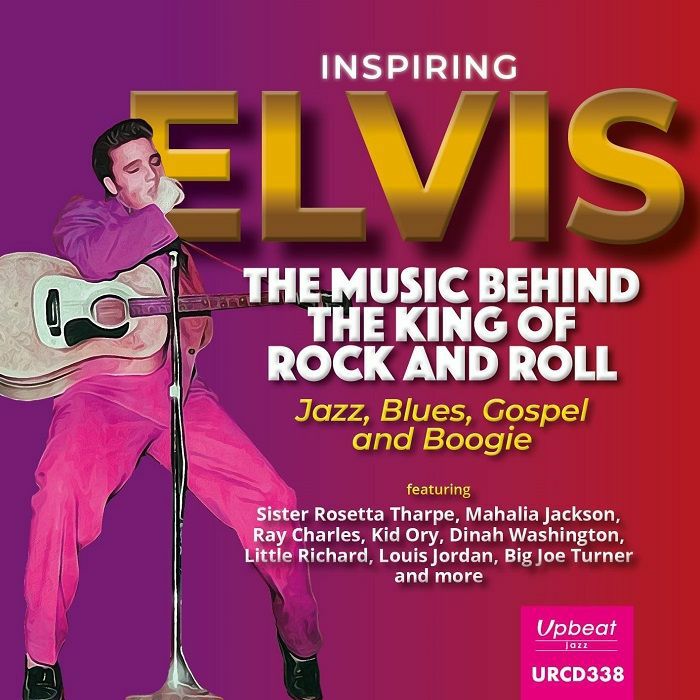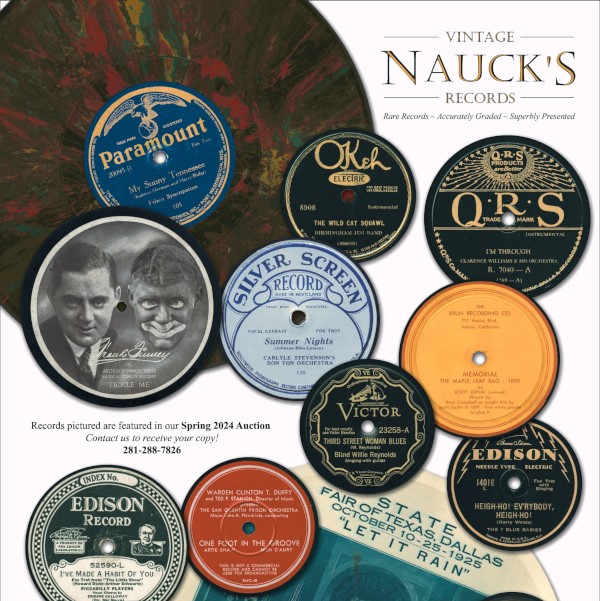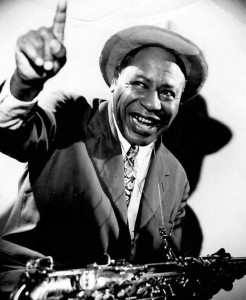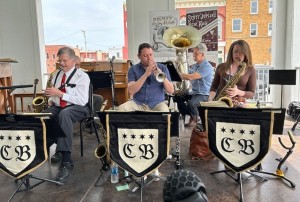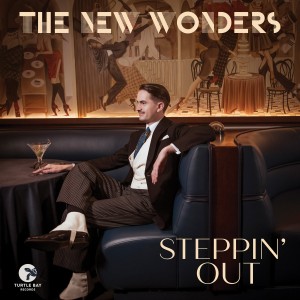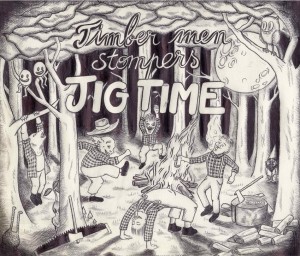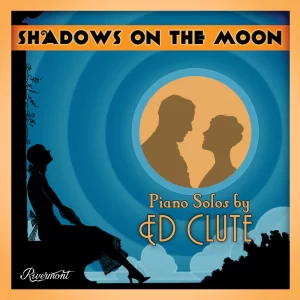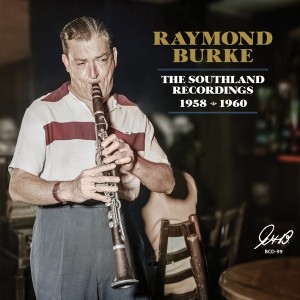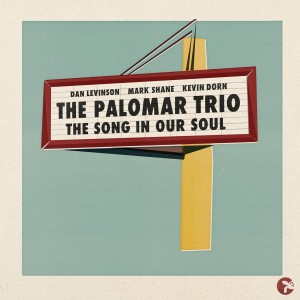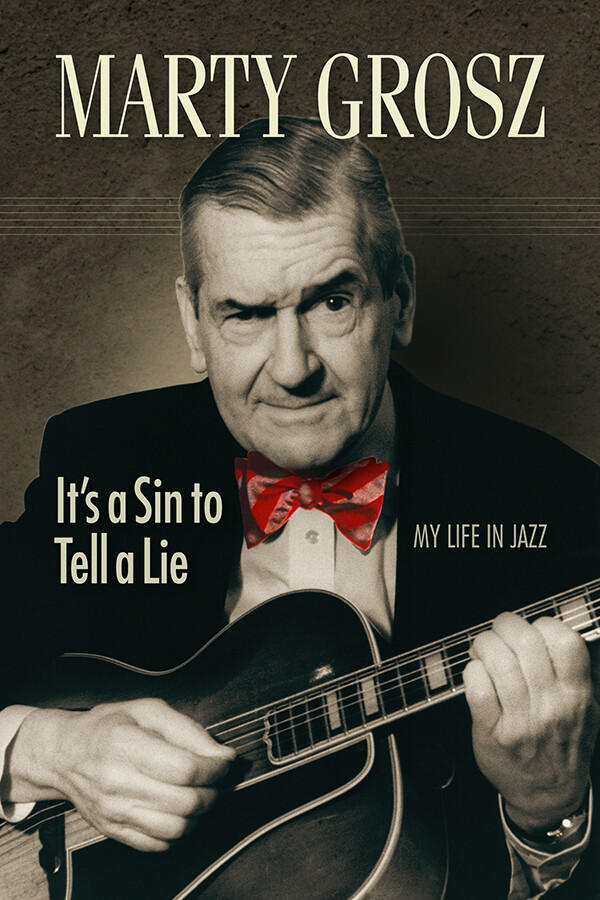 Marty Grosz has long been a triple “threat” on stage. A superior acoustic guitarist, he takes inventive chordal solos in the tradition of Carl Kress and Dick McDonough and provides inspiring accompaniment for other musicians. Grosz is a fine singer strongly inspired by Fats Waller. And, in addition, he is a humorous and often insightful storyteller whose spontaneous monologues onstage are sometimes quite funny.
Marty Grosz has long been a triple “threat” on stage. A superior acoustic guitarist, he takes inventive chordal solos in the tradition of Carl Kress and Dick McDonough and provides inspiring accompaniment for other musicians. Grosz is a fine singer strongly inspired by Fats Waller. And, in addition, he is a humorous and often insightful storyteller whose spontaneous monologues onstage are sometimes quite funny.
Recently the 90-year old performer came out with his memoirs, It’s A Sin To Tell A Lie (Golden Alley Press). Divided into two parts, the bulk of the book (titled My Story) was written by Grosz. The shorter second part, The Interviews, was conducted by his bassist Joe Plowman.
The rather breezy narrative starts out strong with Grosz talking about his childhood which began in Berlin. His father, the notable artist George Grosz, outwitted and barely escaped from the Nazis in 1933, settling with his family in New York. Although he could have been an artist himself, Marty Grosz was attracted to swinging jazz. He began on the ukulele when he was eight, took up the acoustic guitar when he was 13, and never was interested in the electric guitar unlike nearly all of his contemporaries. Grosz alternated between acoustic guitar and banjo during his long (and still active) musical life. He discusses his brief time in college, his period in the military, and his earlier musical experiences when he worked in Chicago.
At that point, around 1/3 of the way through the 194-page book, the chronology becomes less clear and Grosz races through his life, staying on some subjects that interested him and skipping quickly through many others. It is fun to read his memories of Eddie Condon (although that could have been much longer) while a chapter on Chet Baker seems pretty unnecessary. One wishes that he had said much more about joining Soprano Summit (his big break), and at least something personal about Kenny Davern, Bobby Gordon, and Jabbo Smith; he tried unsuccessfully to get Smith to make a comeback in the early 1960s but that is not mentioned. Grosz could have talked a lot more of the artists who he shared stages with. Some of his negative opinions (about Milt Hinton, George Wein, Dick Gibson, Ruby Braff, and Joe Pass) are a bit surprising but mostly stated in a humorous way. Next to nothing is said about any of his recordings, and the book does not include a discography.
The interviews with Joe Plowman are largely random as Plowman persuades Grosz to repeat a few stories that he had heard him say on stage. This part often wanders and sometimes the guitarist never gets around to answering the questions (such as the story about George Duvivier’s exploding bass which is never told) but he does have a hilarious anecdote about Charles Mingus and Bobby Rosengarden on a band bus.
While this book could have easily been three times longer if Marty Grosz had had a well-organized collaborator who inspired him to cover much more about his life, what is actually included in It’s A Sin To Tell A Lie is a delight. Think of it as a rare opportunity to hear Marty Grosz simply telling tales and expressing opinions about his life and some of what he has seen.
It’s A Sin To Tell A Lie is recommended and available from www.goldenalleypress.com.
It’s A Sin To Tell A Lie
by Marty Grosz (with Joe Plowman)
Golden Alley Press; 210 pp
ISBN: 978-1733305532




